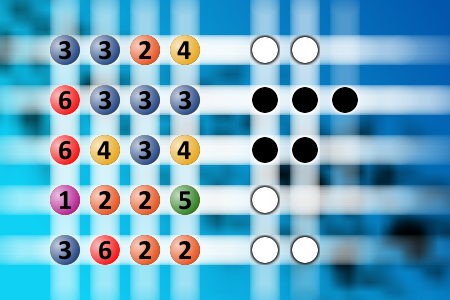What a winning combination?
The computer chose a secret code (sequence of 4 digits from 1 to 6). Your goal is to find that code. Black circles indicate the number of hits on the right spot. White circles indicate the number of hits on the wrong spot.Correct answers: 79
The first user who solved this task is Djordje Timotijevic.
#brainteasers #mastermind

Birthday cake for wife
On wife's b'day, man ordered a cake on phone.
Salesman: What message to put on the cake?
Man: Write “Getting older but U R getting better.”
Salesman: kaise likhna hai message ?
Man: Well.. put “U R getting older” at the top and “but U R getting better” at the bottom.
When the cake was opened all guests died laughing at the message.
It read: “You are getting older at the top, but you are getting better at the bottom!”

